As people are slowly turning back to self-sufficiency, and embracing homesteading, one of the biggest resurgences has been the humble backyard chicken. They are easy, cheap to keep and provide fresh eggs every day, but only if they have a good place to nest, such as a chicken nesting box.
As more and more people are learning to become self-sufficient and live off the land, chickens are the perfect ‘starter’ livestock animal.
Previously we have looked at how to make your own small-scale quail farm, and how productive they can be. But nothing beats the humble chicken when you are taking your first self-reliant steps, or whether you are running a fully-fledged country practice.
In this post, we were making a new home for our chickens, but to do so, we decided to add our own chicken nesting box that they would feel comfortable with. If you are planning on having productive hens that lay eggs you will need nesting boxes for them, so keep reading to learn the 6 easy steps to building a chicken nesting box.
Step 1: What Makes a Good Nesting Box Design?
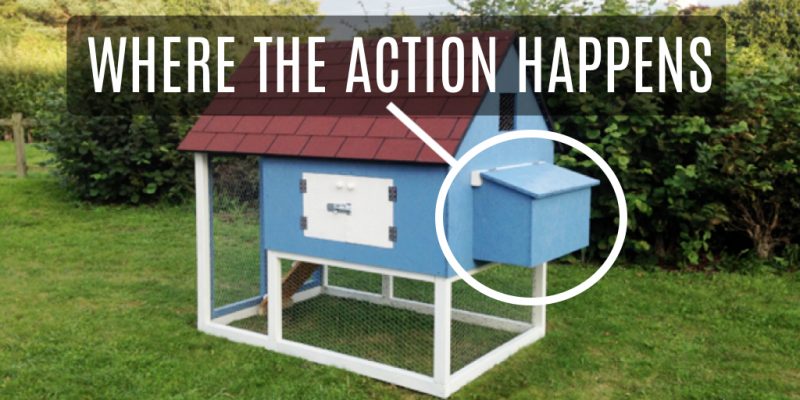
The very first thing you need to know is that chickens are very fussy! There are three key elements that make a nesting box suitable for the chickens to have optimal laying environments, which are:
- Quiet
- Dark
- Private
The nesting box must meet these three needs otherwise your hens won’t use them and they certainly won’t lay eggs inside them.
So when reading the rest of this guide and building your nesting box bear these three points in mind to make sure you can start producing a lot of eggs, as well as keep your hens happy.
Step 2: Figuring Out the Correct Size
Before you start building your chicken nesting box you need to figure out how many you need and also how big the nests need to be.
Let’s start with how many you need. A good general rule of thumb to use is 1 nesting box per 4 hens. So if you have a flock of 20 hens, you need at least 5 nesting boxes.
For our chicken coop, we’ve only used two boxes (see below), and we kept them fairly spacious so the chickens can make their own comfortable nests with straw.
Now onto the size of the nests;
- Bantam Chickens: 12inches tall, 12 inches wide, 10 inches deep.
- Regular Chickens: 12inches tall, 12 inches wide, 12 inches deep.
- Large Chickens: 12inches tall, 14 inches wide, 12 inches deep.
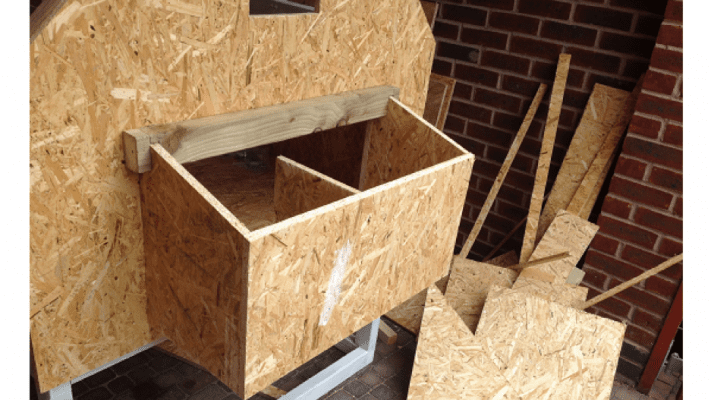
Step 3: Finding the Right Location
Now you’ve figured out how many nesting boxes you need to build and how big they need to be, it’s time to find a suitable location for them because this implicates the design.
You have two options;
- Fix it to your existing coop
- Make a freestanding nesting box
If your existing chicken coop meets the three key criteria listed above, my preference is always to fit the nesting box onto your coop; chickens are creatures of habit and like familiarity.
Fixing a nesting box to an existing coop is quite easy, and if you already have a chicken home, then it saves you the extra effort of making a brand new chicken coop. To add a box to our new chicken coop, we simply fixed firm brackets of supporting wood to a cutout we made in the back of our coop. You can see the four images below on how we did this.
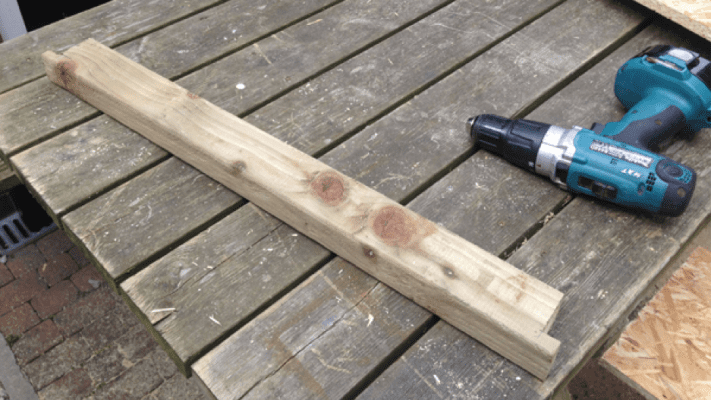
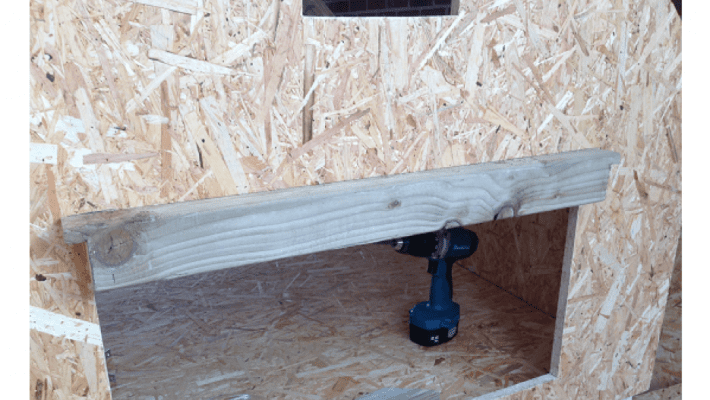
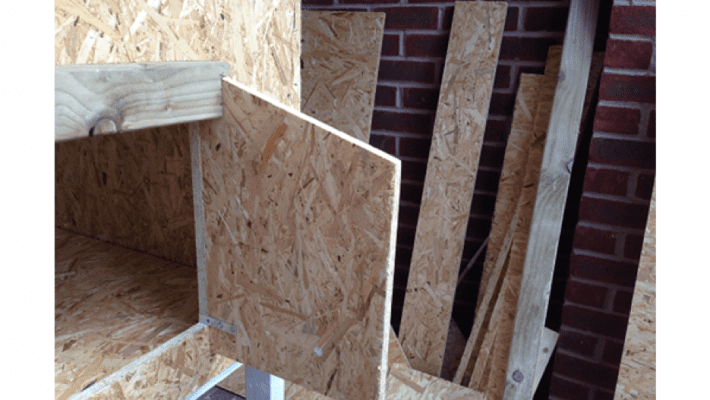
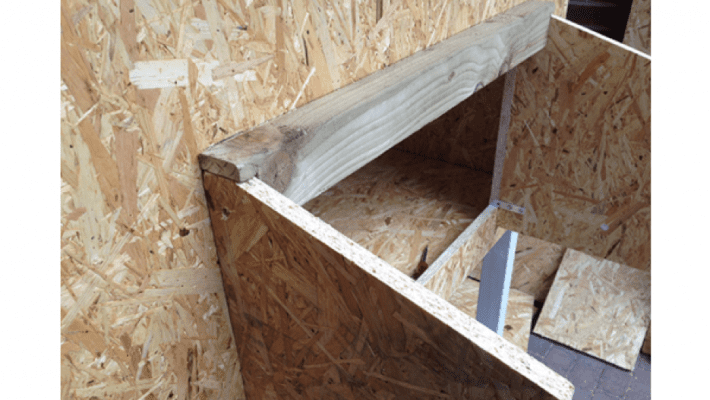
However, if your coop doesn’t then you should build free-standing nesting boxes as your chickens will be more comfortable.
Step 4: Designing the Nesting Box
Remember chickens don’t need anything fancy with a nesting box. A simple wooden box with dividers suffices most of the time. Because of the spacing, I decided to go with just having two chicken nests, so made the markings, popped in the brackes, and fixed in the walls as you can see below.
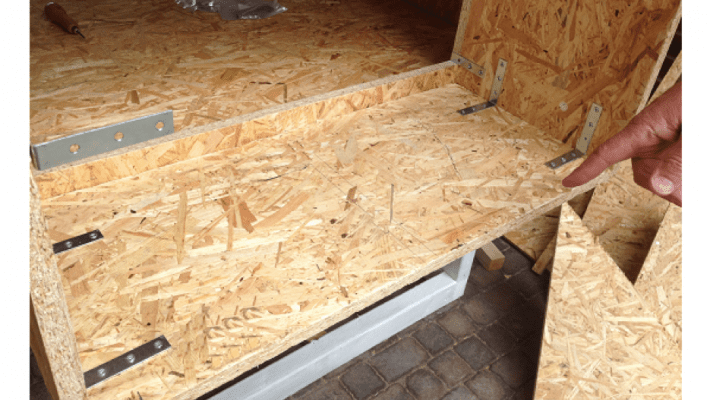
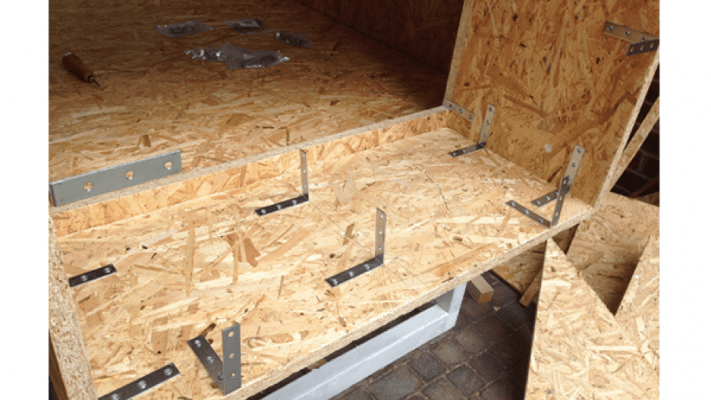
However, if you’re building a free-standing nesting box then you can get creative and use different materials and styles.
If you’re short on inspiration you can find 13 free nesting box plans here; they range from reclaimed wine barrels to bucket nests.
Step 5: Building the Nesting Box
Just remember, chickens aren’t fussy. You just need to make sure that the nesting box is solid and doesn’t have any gaps that let light into the box.
If you’re building with wood make sure to sand the edges and remove all splinters so your chickens don’t get cut.
Once you have added your walls, you should design an effective ‘lid’ for the box, so that you can open it up and easily access those tasty eggs.

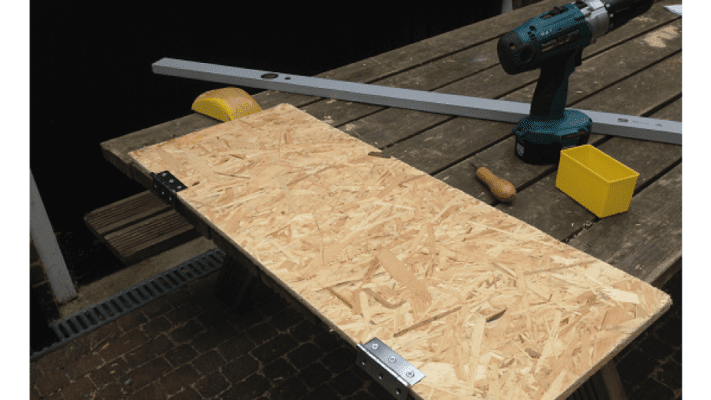

Step 6: Training Chickens to use Nesting Box
Once you’ve built the nesting box it’s time to introduce your chickens to it.
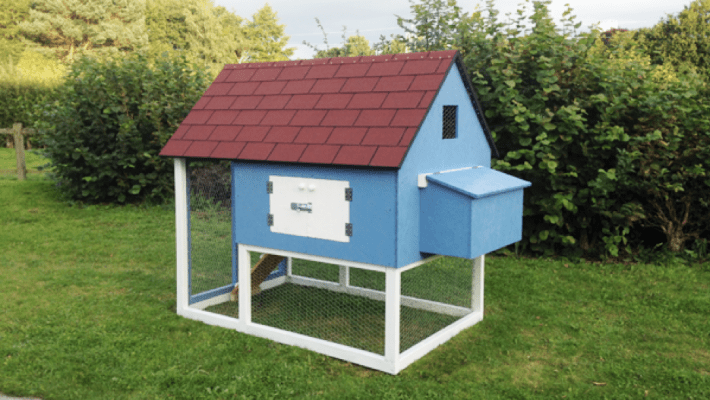
First of all, make sure the nesting box is comfortable for them by adding an inch of straw to the base of the nesting box.
You will find that once the chickens have access to the chicken nesting box they should use it without much encouragement.
If they are hesitant you can place some feed inside the nesting box to encourage them in. You can also place plastic eggs inside the nesting box to encourage them in. You will find your hens are laying fresh eggs in their new nesting boxes in no time at all!

I found it was important to have the nest boxes positioned a bit higher than eye level to a chicken standing on the coop floor. This makes any eggs left in the nests out of sight, out of mind. I had a floor level nest box for a “disabled” hen (it was more in her mind than her body). The eggs she laid were visible to foot traffic in the coop. Chickens are curious. At first, they started to play with the eggs. When the jostling broke an egg, they discovered there was tasty stuff inside. Our rooster (at the time) became a criminal — an egg eater. He began to teach the other what was inside of egg shells. He was quickly removed and (thankfully), his criminal thinking did not spread among the rest.
No more floor-leve boxes for me.